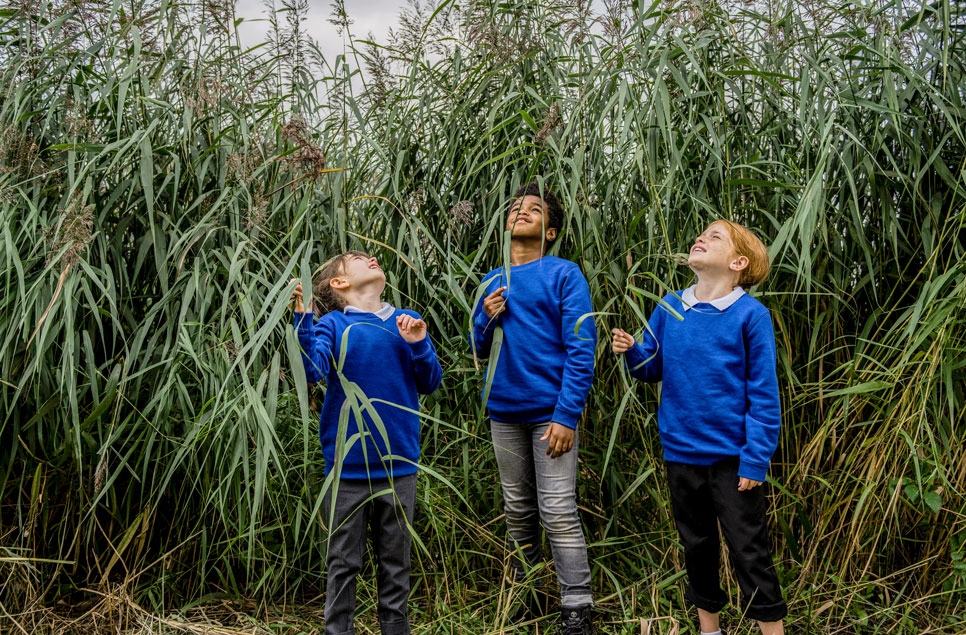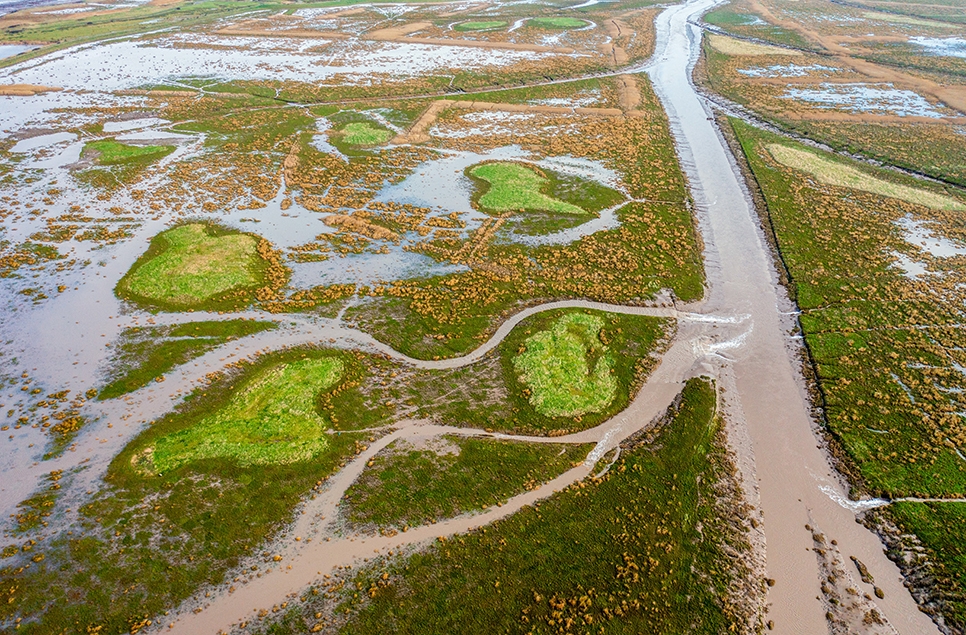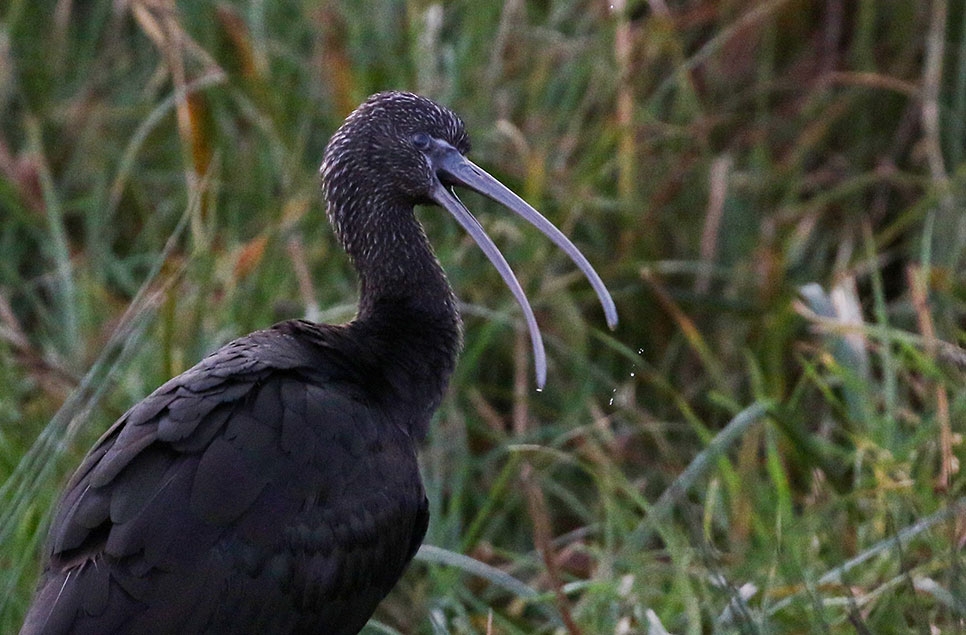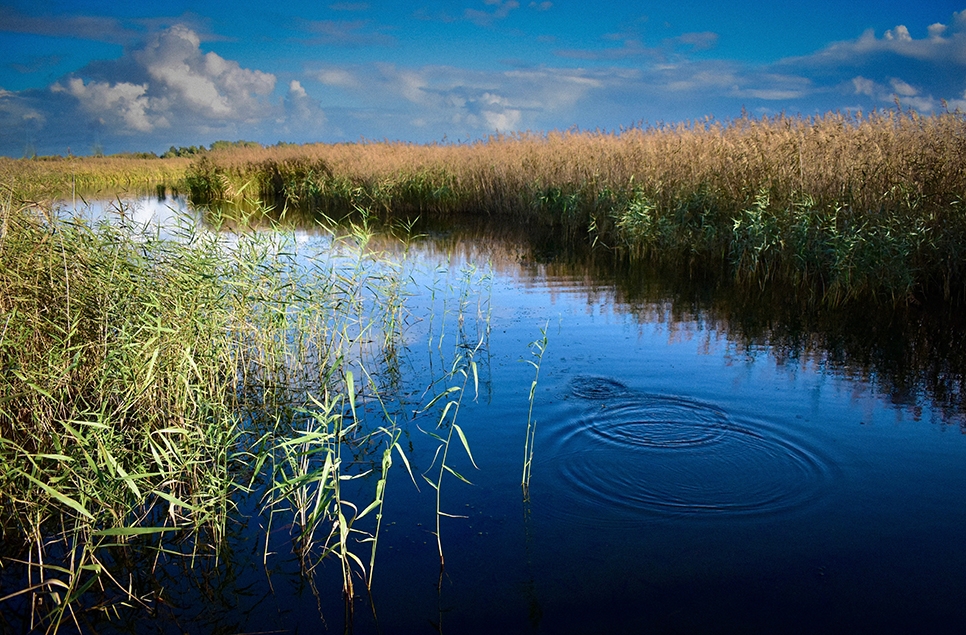11 easy things you can do to improve your dragonfly ID
We’ve all been there, right? A bright summer’s day, strolling around your favourite wetland and a dragonfly zips past. As your eyes try to follow where it went, you notice other dragonflies perched up in the long grasses. Or are they damselflies? And why so many different patterns and colours?
They might be easier to see than many bird species, but identifying dragons and damsels can be tough. But, by learning some basic ID techniques, you’ll soon grow in confidence and accuracy.
Here’s our guide to get you that successful ID.
1. Immerse yourself and open your eyes
Any wetland can be habitat for dragonflies and damselflies. Take a walk, somewhere there is vegetation next to water. From late April to October, you’re likely to see one. Even canals and ditches can be worth a look, or along nearby hedgerows or woodland edges where they hunt and rest.
Early in the morning, when it’s still cool, can be a good time to see them at roost. They’re cold-blooded, so need the day to heat up before they can start to fly.
Equally, very hot days can be perfect for seeing them perched up, as they overheat and can’t stay airborne for long periods.
It can be tougher to get a good look at them in average daytime temperatures, as this is their optimum flight temperature. They’ll be fast!
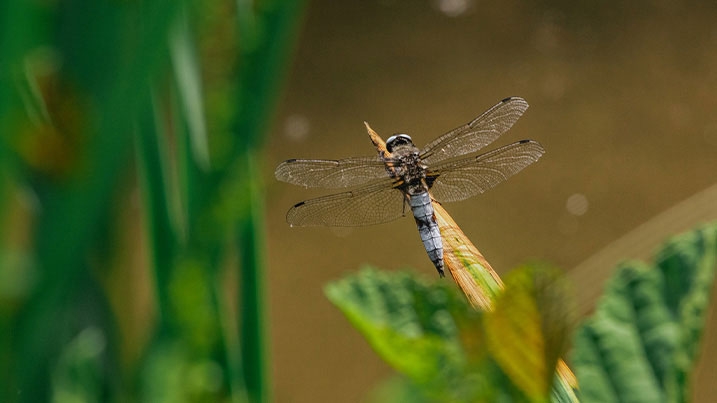
2. Is it a dragonfly or a damselfly?
Dragonflies are large, robust insects, with eyes that meet in the middle of their spherical head. When perched, you’ll note that their front wings are narrower than their hindwings, with both pairs held open.
They’re fast flyers.
In comparison, damselflies have a slow, fluttering flight. When resting, these delicate insects usually hold their wings closed. The front and back pairs of wings are of equal size and their eyes are placed on either side of their rectangular head.
3. What habitat are they in?
Many dragonfly and damselfly species are present across a range of habitats, but some do have a preference. For example, the beautiful demoiselle damselfly prefers fast-flowing, clean streams, whereas the banded demoiselle damselfly prefers slow-flowing, muddy streams.
Common hawker dragonflies need acidic water, like that found on moorland and heaths. Whereas migrant hawker dragonflies can't tolerate it.
4. Think about flight period and normal distribution
Knowing what time of year species are likely to be on the wing can narrow down your options. For example, hairy hawkers are up and about before all other dragonflies, in late April. So if you see a dragonfly at this time, it has to be a hairy!
Getting to know a species’ distribution can be helpful too. For example, common blue damselfly is widespread throughout the UK, whereas northern emerald dragonfly and azure hawker dragonfly are only found in Scotland.
5. How's it behaving?
Different species behave differently. So movement and activity can hold vital clues for ID.
Be sure to factor in your knowledge of particular species: how they fly, what sort of vegetation they are likely to be found on, how alert, how likely to settle, or noticeable flight features such as an angled abdomen.
Some will be patrolling a certain area, like the male hawker dragonflies. Whilst some defend a woodland perch, like the ruddy darter dragonfly.
6. Learn the parts of a dragonfly
Now that we’ve narrowed things down by thinking about the habitat, flight period, distribution, behaviour and family, you’ll need to check the finer details to clinch the ID.
There are over 30 species of dragonfly and damselfly that can be found in the UK and for many, the colours of the thorax and abdomen are the key parts to pay attention to.
It may seem confusing at first, but once you start learning, they become fairly easy to tell apart.
Building up your knowledge will also help when referring to your field guide or when trying to communicate your discovery to other enthusiasts.
A good starting point is getting to know the features of large hawker dragonflies. The patterns and colours across their thorax and abdomen can be easily seen.
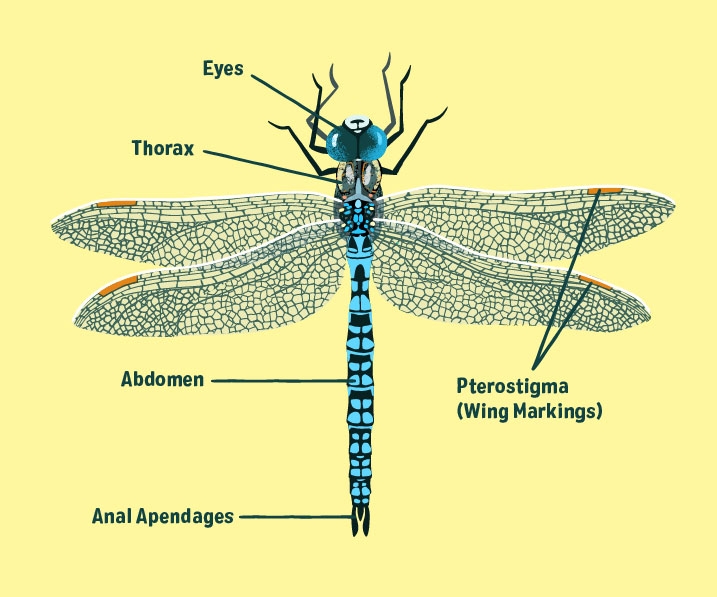
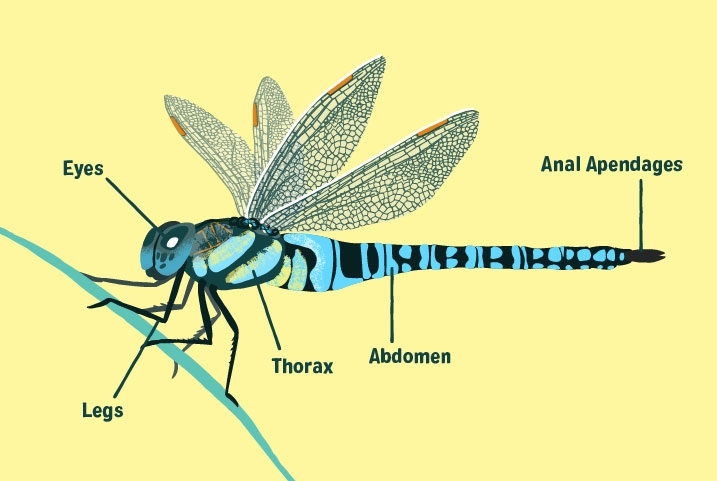
7. Get yourself a pair of binoculars
Some of the above features can be tough to see with the naked eye so even a small pair of binoculars can be worth their weight in gold.
They’re really useful for ensuring you see the finer details or for following them in flight. Additionally, you will be able to stand back a little further and not disturb them when perched.
No matter your budget, there will be a pair out there for you. Something like the SWAROVSKI OPTIK NL Pure will deliver optimum viewing, whilst the Viking Peregrine 8x42 can be a good bet for any budget.
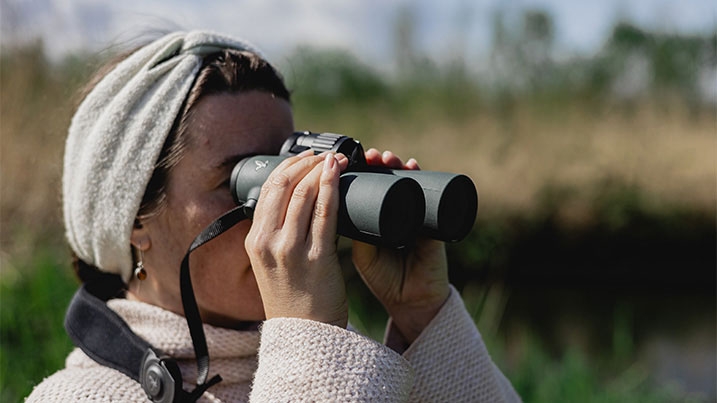
8. Read around your subject
Be sure to really ingest all your dragon-ID experience by using a good field guide. Britain's Dragonflies: A Field Guide to the Damselflies and Dragonflies of Great Britain and Ireland (Smallshire & Swash) or Field Guide to the Dragonflies and Damselflies of Great Britain and Ireland (Brooks) are some of the best available.
Mobile apps are also available and come in very handy when out in the field. Dragonfly ID Britain and Europe is one of our favourites for a quick reference.
9. Build it and they will come
Ponds are a great habitat to see dragonflies. So long as there aren’t fish or ducks present, which prey on the dragonfly larvae, almost any pond can provide good habitat. In your garden pond, use floating plants such as frogbit for dragonfly larvae to hide under. Plants with tall stems such as yellow flag iris are used by emerging larvae to climb up and out of the water. Any wooden posts, sticks and flat stones will be appreciated by adults as look-out and sunbathing spots.
See our guide to native pond plants for more advice on what to choose.
10. Find the youngsters
Finding dragonflies on the wing can actually be a lot tougher than when they are in larval form. If you have the opportunity, pond dipping can give a unique view into their dark, underwater world and a real treat to see them up-close. They can be found any time of year.
During the spring and summer, they use tall, upright stems to crawl up and emerge from their exoskeleton – leaving behind an ‘exuviae’ clinging to the plant.
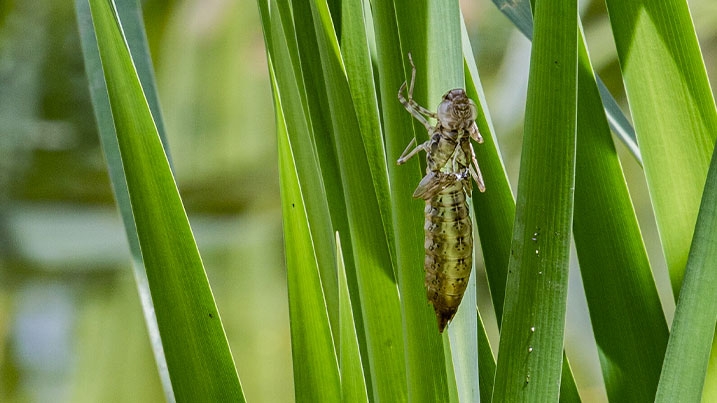
11. Practice, practice, practice
Getting out to see dragonflies as much as possible over the summer months is key. Your brain is the best learning tool there is, so the more you see, the easier it will be to remember the ID for next time.
After every outing, make notes and consult an ID guide to really firm-up your knowledge. Take time to read through the descriptions and illustrations.
Being really familiar with the guide will enable you to skip to the right page next time you make a new find.
Even experts can be challenged by the occasional ID challenge – but’s that’s half the fun!
So the next step is simple – get out there!
Caerlaverock, Steart Marshes and London have been carefully chosen by the British Dragonfly Society as ‘dragonfly hotspots’.
Explore the wildlife corridor ponds on the Land Rover Safari at Slimbridge or enjoy the dragonfly ponds at Welney.
For a sneak peek of what you might see, check out this video with Slimbridge Senior Reserves Warden Martin McGill as he takes you on a tour of his favourite dragonfly spots.
If you can’t make it to a centre right now, listen to our podcast episode (S2, Ep1) with dragonfly expert Dave Smallshire at London Wetland Centre.
Come eye to eye with an emperor and start your summer of wonder now:
Find your wow© Images Agami/WWT/Carys-ink.com
